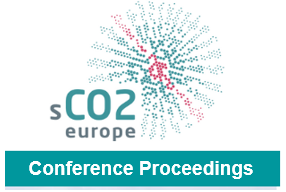Operational analysis of a self-propelling heat removal system using supercritical CO2 with ATHLET
This study proposes preliminary guidelines for the design and operation of a supercritical carbon-dioxide (sCO21) heat removal system for nuclear power plants. Based on a thermodynamic optimization the design point is calculated incorporating an existing small-scale compressor map. The behavior of the cycle is tested under varying boundary conditions on the steam side of the compact heat exchanger. The simulations are carried out with the thermal-hydraulic system code ATHLET, which has been extended for the simulation of sCO2 power cycles. The extensions include the thermodynamic properties, heat transfer and pressure drop correlations as well as performance map based turbomachinery models, which take the real gas behavior of sCO2 into account. During the decay heat transient, compressor surge occurs in some of the simulated cases. In order to avoid compressor surge and to follow the decay heat curve, the compressor speed is reduced together with the steam temperature. This enables to operate one single system down to a thermal load of less than 50 % even under the design restriction caused by the application of the existing compressor performance map.
1sCO2 is defined as carbon dioxide at supercritical conditions with p > 73.8 bar and T > 31 °C
Vorschau

Zitieren
Rechte
Nutzung und Vervielfältigung:
Dieses Werk kann unter einer Creative Commons Namensnennung 4.0 Lizenz (CC BY 4.0)
Creative Commons Namensnennung 4.0 Lizenz (CC BY 4.0)
genutzt werden.
